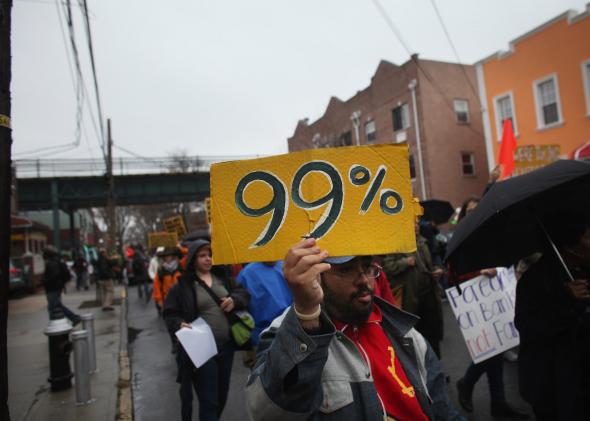The Bank of Bird-in-Hand is set to open its doors soon and will become the first new bank chartered in quite a few years. It’s become slightly harder as a regulatory matter to launch a new bank since the crisis, but the biggest reason nobody’s been opening new banks is that banks have been closing like crazy. About 1,640 banks have vanished since the end of 2007, either due to merger or failure, so if you want to get into the banking game, the best approach has been to simply take over a failing bank.
But did I mention that despite the huge reduction in the number of banks in this country there are still 6,891 banks in America? That’s a lot of banks.
And indeed the flipside to the much-discussed problem of the American megabank is the less-discussed problem of America having far far far too many banks. There are three basic problems with the microbanks:
- They are poorly managed: You know how the best and brightest of Wall Street royally screw up sometimes? This doesn’t get better when you drill down to the less-bright and not-as-good guys. It gets worse. And since small banks finance themselves almost entirely with loans from FDIC-ensured depositors, nobody is watching the store. In effect, the well-managed banks are being taxed to subsidize the poorly managed ones. The dubious decision-making doesn’t get as complicated as what you see on Wall Street—it’s mostly just classic boom-and-bust pro-cyclical commercial real estate loans—but it creates all the same problems.
- They can’t be regulated: Since these banks are so small, they could be easily driven out of business by high regulatory compliance costs. So since American public policy is perversely committed to preserving them, small banks regularly get various kinds of carve-outs from regulations. And once the carve-outs exist, they create pressure for extension further up the food chain. Other times the compliance issues of small firms become a reason to simply not do tight regulation.
- They can’t compete: If you want the JPMorgan Chases and Bank of Americas of the world to be held to account, you need both regulation and competition. But a bank serving a handful of rural counties or a single midsized city doesn’t offer any real competition. Having a large share of America’s banking sector tied up in tiny firms only makes it easier for a handful of big boys to monopolize big-time finance.
Note that we used to have a different regulatory climate under which this wasn’t a huge problem. We have all these small banks because we used to have regulations that forced banks to be small. You couldn’t operate in more than one state, for example. And in many states, there were restrictions on how many branches you could open. This policy had a lot of downsides, but one clear upside was you didn’t have the emergence of world-destroying megabanks. Today, though, we have the megabanks already. The continued existence of the microbanks isn’t causing them any headaches, it’s in effect sheltering them from competition and regulation.
The policy we should hope for is to simultaneously contain the size and leverage of the biggest banks while encouraging the second tier of regional banks to keep growing. We should want the US Bankcorps and PNCs and Fifth Thirds and BancWests of America to swallow up local franchises and expand their geographical footprints. The ideal would be effective competition in which dozens rather than thousands of banks exist, and they all actually compete with each other on a national or regional basis rather than carving up turf.
